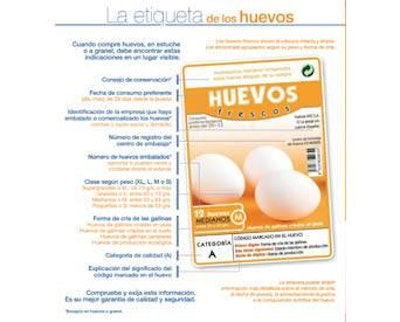
Spain’s egg industry is about to launch a two-year EURO1.13 million (US$1.54 million) education campaign.
The principal aim of the initiative will be to educate consumers about egg labeling in the EU, and how it acts as a guarantee for eggs that are sustainable, of a designated quality, and subject to strict controls -- irrespective of the method used to keep the laying hens.
The program is receiving 50 percent of its funding from the EU, and is one of 20 projects approved by the European Commission this year to promote the agriculture sector.
Producer-focused theme
The two-year project will see umbrella egg industry association Interprofessional Organization of Eggs and Egg Products (INPROVO) build a communication strategy with egg producers at its center. Consumers will be able to follow the route that the egg takes from farm to table, with producers being the spokespeople for the industry.
Egg producers will talk about their work on-farm, how eggs are produced in the EU, and the guarantees offered on food safety, the health and well-being of birds and the environment.
Egg price volatility
The campaign is launching after a difficult period for one of Europe’s largest egg producers. According to INPROVO, egg producers have lived through one of the worst crises of recent years. Rising costs and a lack of protection from imports produced to lower standards have taken their toll on the sector.
The association adds that European consumers are unaware of the higher standards to which European eggs are produced, meaning that while the cost of home-produced eggs is higher than that of imported eggs, Spanish consumers are not necessarily aware of the difference between European and imported eggs.
Spain’s Ministry of Agriculture notes that egg prices have been particularly volatile over recent years. In 2013, the average egg price in the country was 36.4 percent lower than in 2012. 2013’s prices, however, were 8.2 percent higher than those of 2011.
2012’s spike in egg prices, and the subsequent crash in 2013, can be attributed to a scarcity of eggs as producers adapted to welfare regulations, followed by an increase in supplies as the change was completed.
Joint action
INPROVO will not be working alone, and will draw on the expertise of the country’s institute of egg studies and collaborate with public relations and communications agency Burson-Marsteller. It also has the support of the Ministry of Agriculture, which will supply 20 percent of the campaign’s funding.
In particular, the campaign will look at educating consumers on the rules that egg production must follow and the codes of practice that must be adhered to. It also will explain the traceability systems that are followed. However, no one type of egg production will be presented as superior to another, and the campaign will not examine the nutritional or health benefits of egg consumption.
The key routes for informing consumers will be the Internet and social media, as well as more traditional leaflet and newsletter production, and print advertising in the general and specialized press. However, there also will be interaction with key opinion leaders, journalists and secondary school children, providing an opportunity to clarify any doubts that exist around egg production and labeling.


















